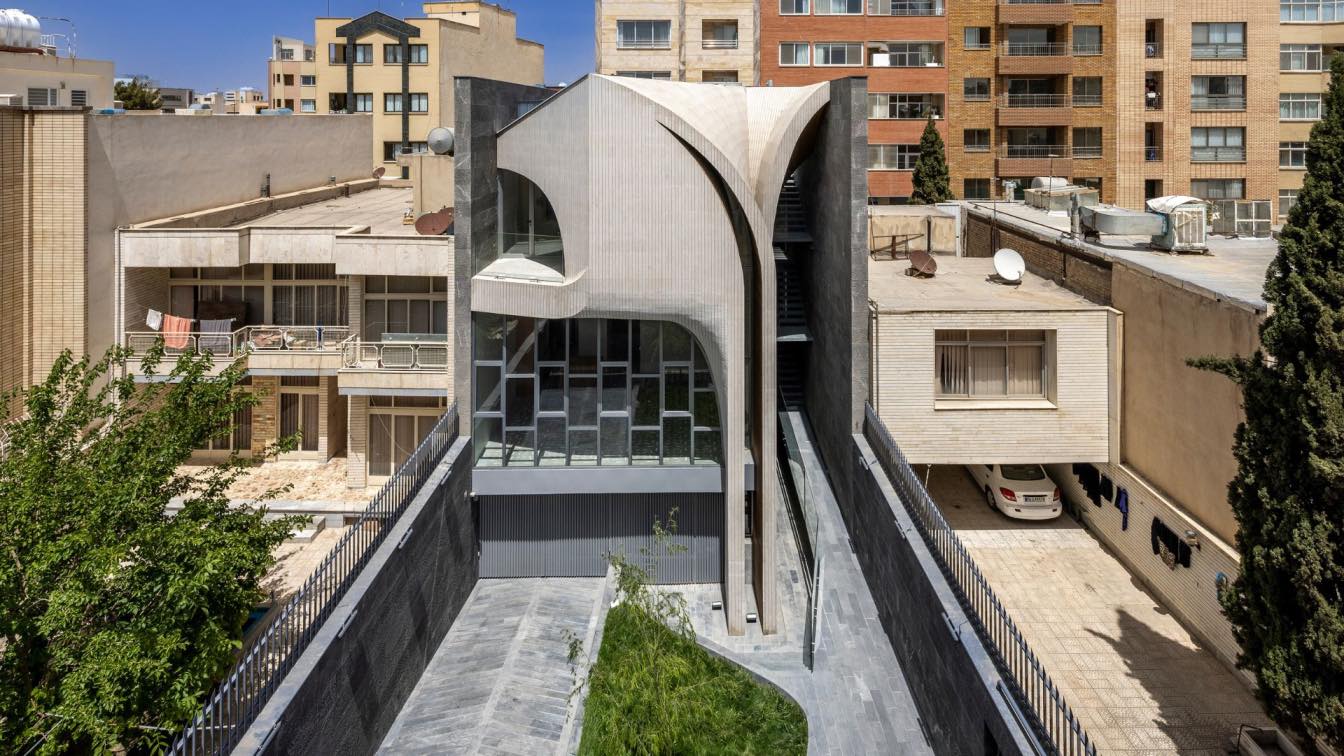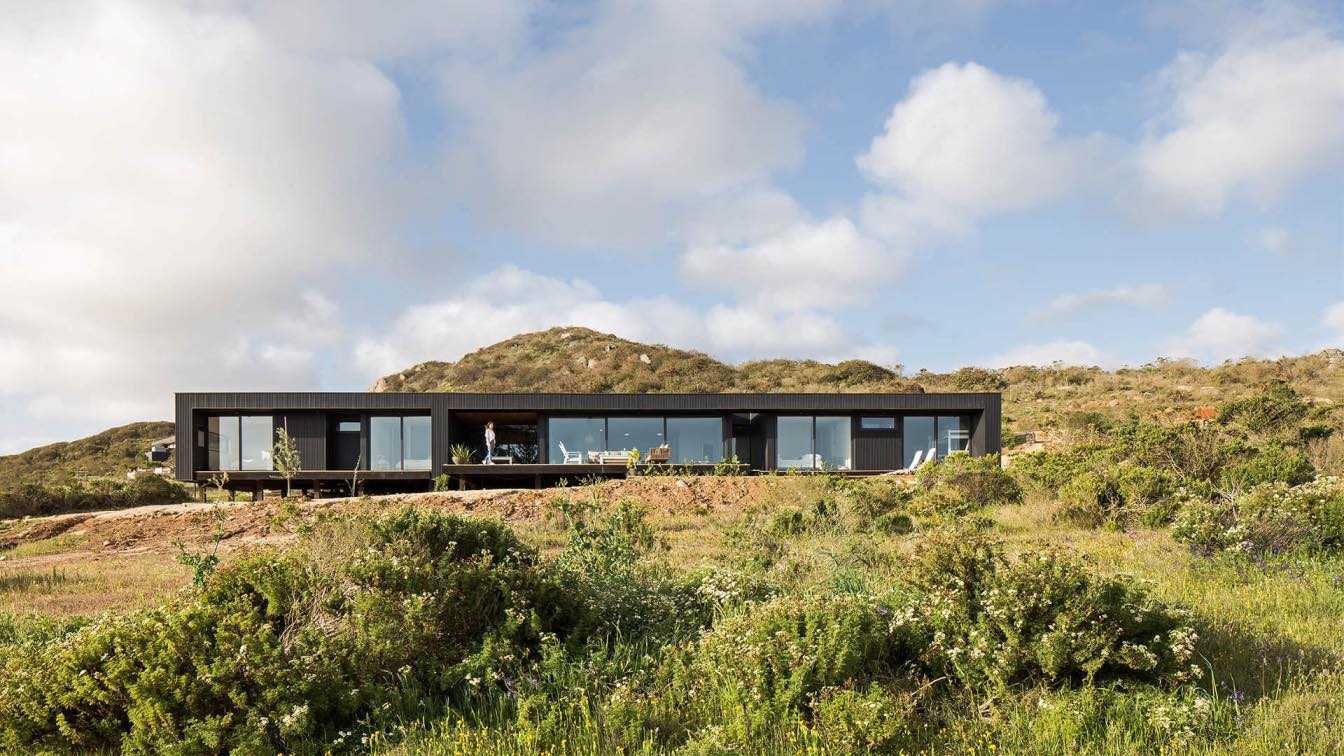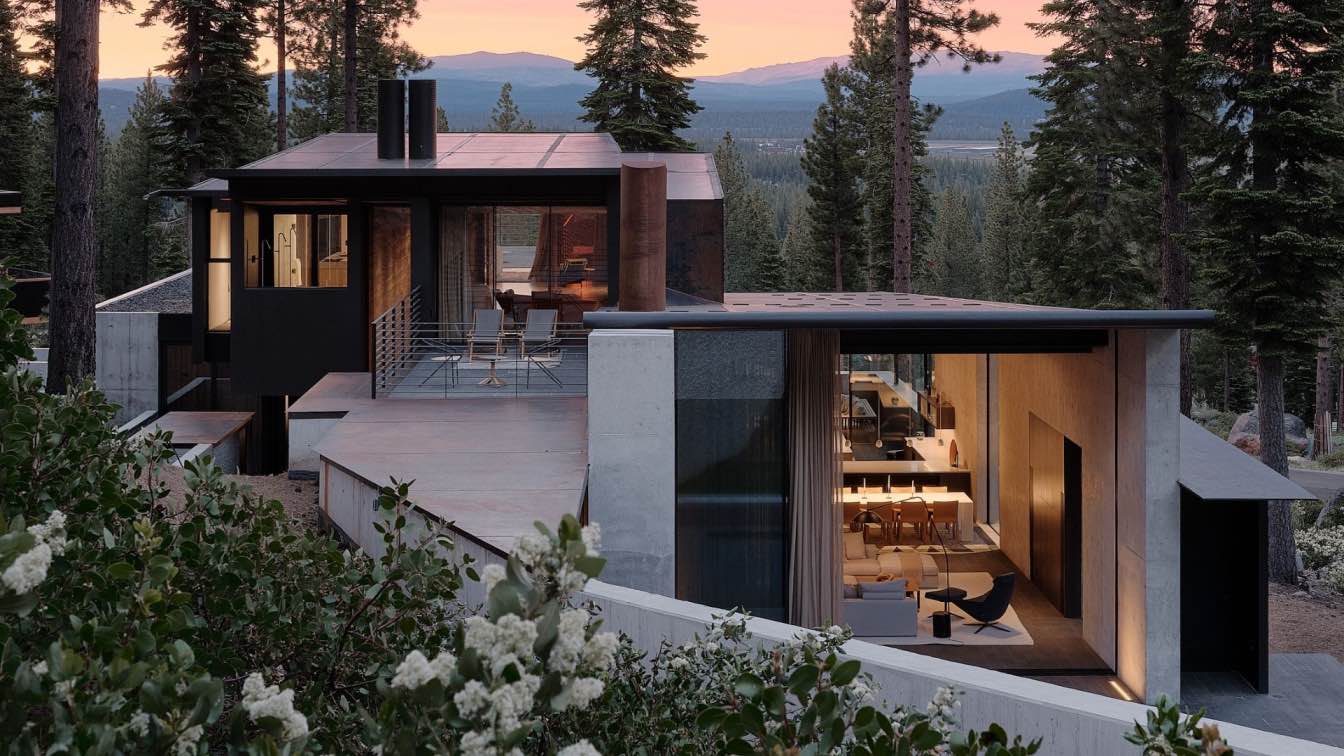The H to V House is located in a high-density urban block in the city of Isfahan-Iran. The project ‘s design corresponds to how traditional spatial relationships in a conventional Isfahan House can be transformed into a modern house within an urban block, whilst maintaining the same traditional circulation concerns and essence of space.
Isfahan is considered as one of world heritage cities, which houses some of the best Iranian architectural and urban space monuments. The people of this city have coexisted with multi-cultural and religious diversities for many centuries, and as a result of numerous cultural and religious influences they have built a very complex and specific behavioral pattern.
This project created an opportunity for us to attentively study the behavior and the social relations of an Isfahani family, in its authentic traditional form. This enabled us to design a house that best suited its urban context, and also maintained a key spatial circulation within the house which is imposed as a reflection of their cultural behavior.
The project is located on a plot of land with an area of 300 m² in a dense context, intended for middle-class families. The land is neighbored from three sides and the municipality dictates that the maximum land occupancy is 60%, the building should be situated to the North of the plot, and that the choice of material, and color, … are according to their restrictions.
CAAT studio found the answer to the project in redefining the traditional Isfahani houses in a modern context. Typical former houses built in Isfahan consist of two parts, The “Andaruni”(Private Zone) and the “Biruni”(Guest Zone) that are interconnected by a service corridor.
The “Andaruni” located at the back of the house, is considered the family's private region with the bedrooms and a small family yard. This segment of the house is very simple and its exempt from extravagant decorations. On the other hand, the “Biruni” is a large reception room that is intended for guests and events, it is located in front of the house which usually overlooks the front yard and is intentionally very rich in decorations and delicate architectural details.
In this project, due to the restrictions imposed by the plot size and the permit restrictions, we turned the typical horizontal plan diagram of traditional Isfahani houses with “Andaruni and Biruni space” into a vertical composition, thus consequently naming the project H to V house.
The Andaruni space is set out on two floors in a very simple manner and has a private courtyard connecting them at the back similar to a traditional Isfahani House. The “Biruni Space” on the other hand is designed in a sophisticated formal manner overlooking the front courtyard, joining the two spaces is a double heighted vertical corridor which embraces the service area of a traditional home. To conclude this project has brought together a” Home” where its occupants can still experience a modern living space that is still in line with the textural identity and heritage.
Along with the idea of the project, variety in the choice of material color can be seen in both Guest and Private zones. (white brick in vertical rows, gray brick in horizontal rows).
In the Guest zone, the white brick shell covers the inside and outside of the project like as a plastic shape, so that the structure and material have been merged, and the private zone, it has formed as a gray brick box.





















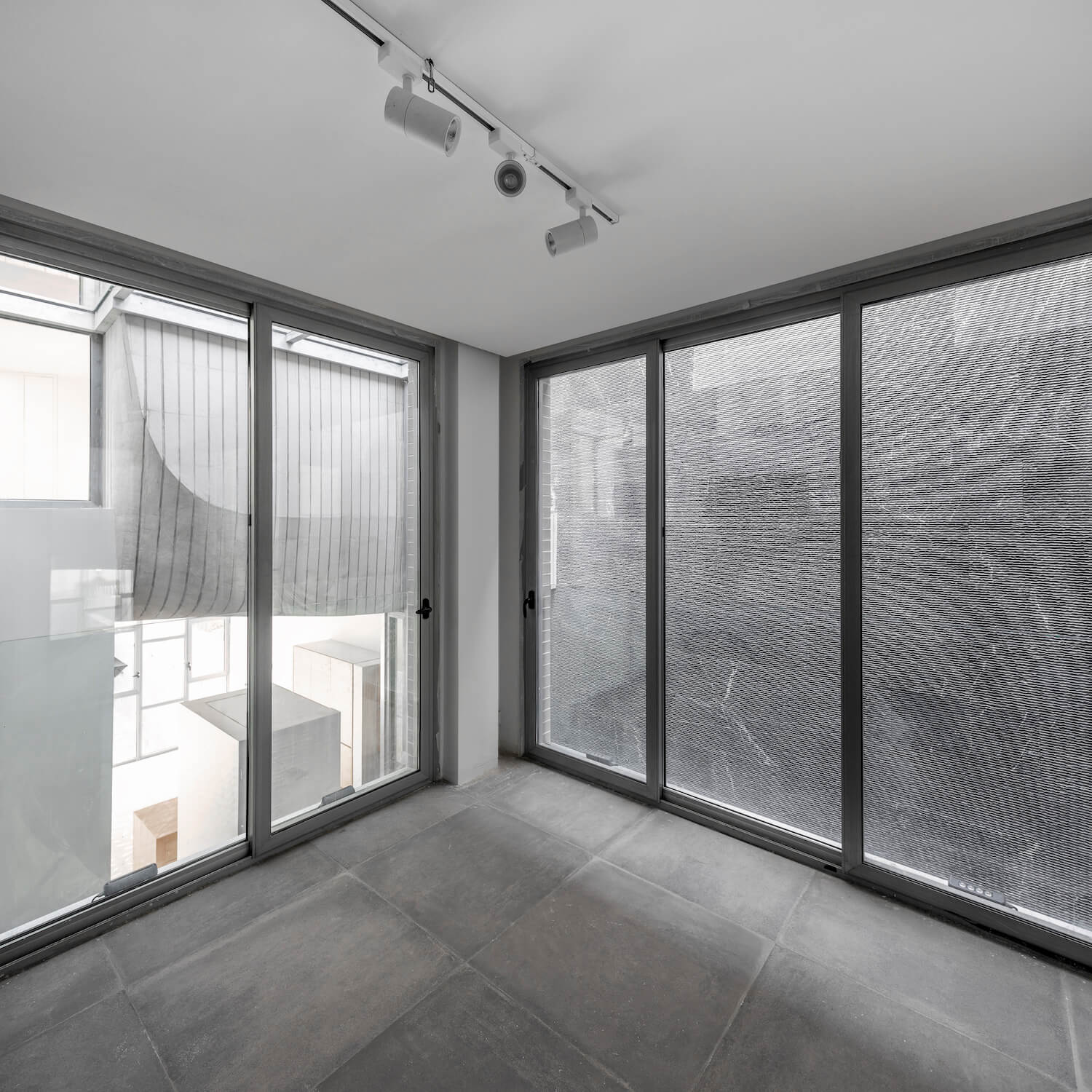






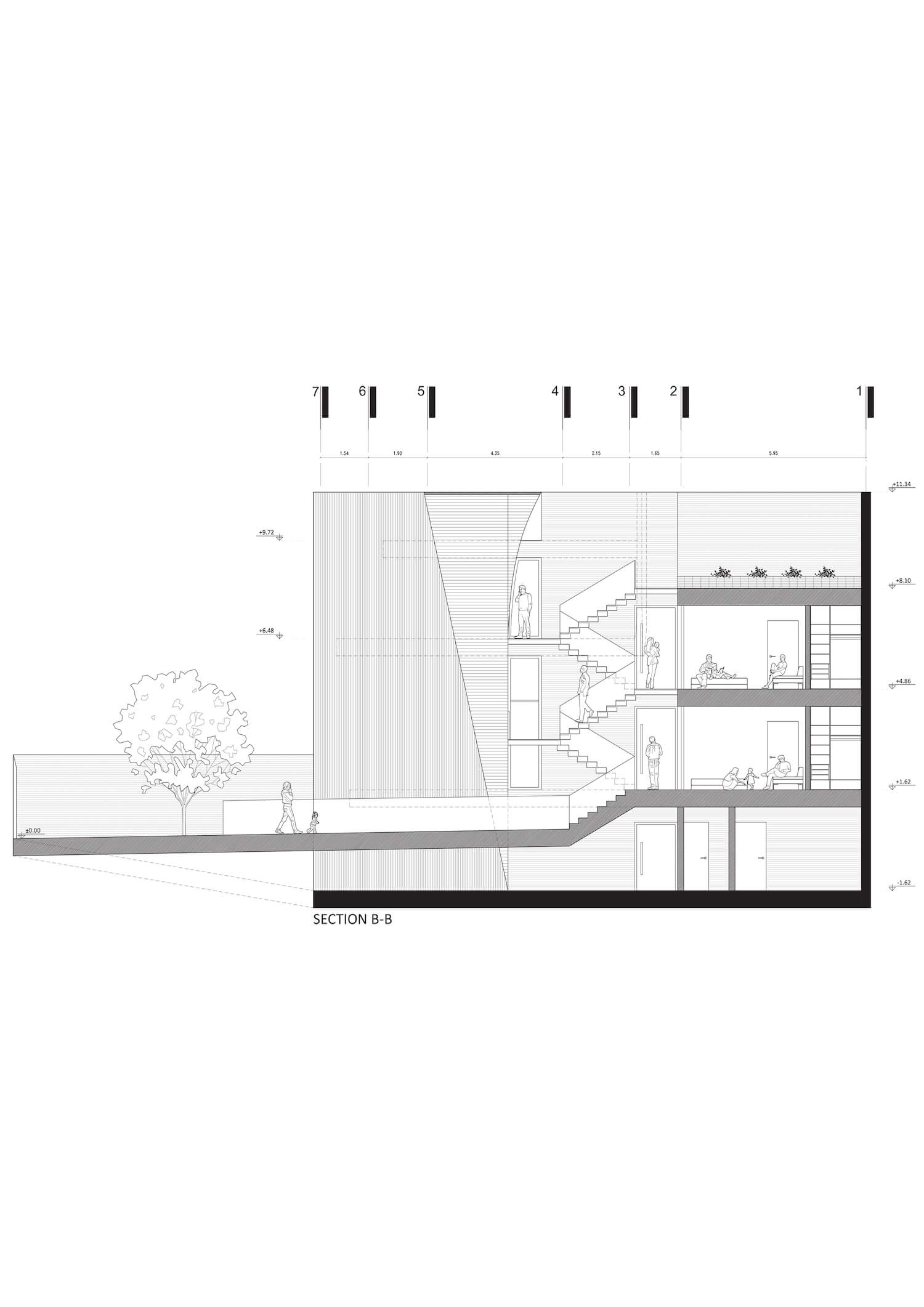




About:
Mahdi Kamboozia established CAAT Studio (C/KambooziA ArchitecTure Studio) in 2015. The CAAT Studio activity can be construction engineering in the context, to the closer the distance from the idea of the design to the construction. The opinion that future architecture is not only about the advancement of design and construct technology but also in proposing ideas tailored to the new conditions in social relations. This look has evolved over the years to deal with different projects and the growth and development of the studio. We are looking forward to confronting the projects with design problems and come up with a solution. Each assignment defines a different story which shows there are varying answers to each task. Some projects allocate to social concerns, some cultural; some focus on relations between users and the projects, others may have a scenario on spaces and their connections or introducing a new usage. CAAT studio studies on future generations, their needs, relations, potentials, and according to each assignment’s usage and aspect, come up with a solution. The prospects in social relations define new connections and expound new operations; we try to study the potentials carefully and propose a solution to problems. For instance, in some cases, the answer is based on the use of unique and natural material (Mahallat Residential No3), or the right construction technique (Kahrizak Residential No1). Sometimes, it is crucial to create a new space as a new use is defined (Jewelry Retail Office No4); sometimes the contexts of the project elucidates the usage or design. (Installation No5). Despite the scale of the project, concerning the related issues on each task is essential and the same process continues….

